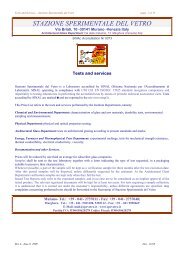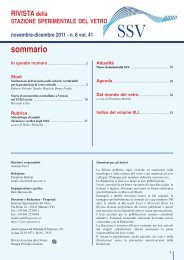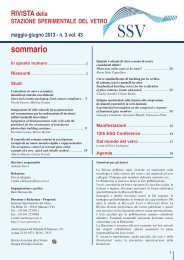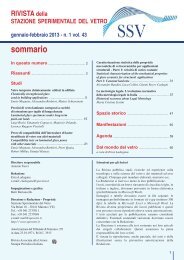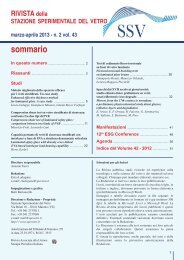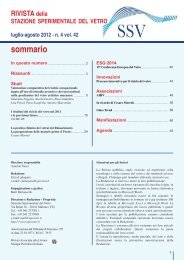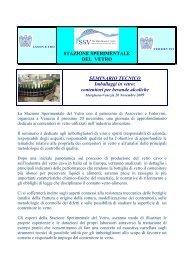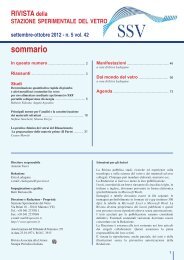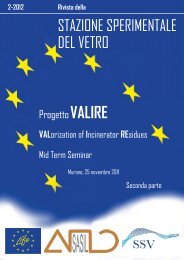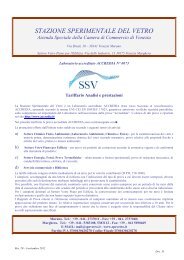RSSV 4 2013.indd - Stazione Sperimentale del Vetro
RSSV 4 2013.indd - Stazione Sperimentale del Vetro
RSSV 4 2013.indd - Stazione Sperimentale del Vetro
Create successful ePaper yourself
Turn your PDF publications into a flip-book with our unique Google optimized e-Paper software.
4-2013<br />
nota tecnica<br />
Rivista <strong>del</strong>la <strong>Stazione</strong> <strong>Sperimentale</strong> <strong>del</strong> <strong>Vetro</strong><br />
MEMO ON SILICA CRYSTALLINE ASSESSEMENT<br />
Gli adempimenti <strong>del</strong>l’accordo NEPSI<br />
sulla Silice Cristallina<br />
NEPSI is a Voluntary Agreement between industry and worker associations<br />
for the implementation of a European System for the reduction of the exposure<br />
risk to silica crystalline. The European glass associations involved are: APFE,<br />
ESGA, FEVE, Glass for Europe.<br />
The NEPSI AGREEMENT includes a commitment to apply different actions<br />
which can be summarized as follows:<br />
• Implementation of Best Practices for the reduction of silica exposure<br />
• Implementation of a periodical worker training<br />
• Implementation of a periodical dust monitoring protocol to evaluate workplace exposure<br />
• Implementation of a health protocol<br />
The objective of the dust monitoring protocol is to collect dust exposure data in order to enable the different<br />
companies to assess compliance with relevant national and EU occupational hygiene provisions,<br />
such as Occupational Exposure Limit Values, and to guide prevention.<br />
A specifi c analytical protocol has been developed by SSV to evaluate the workplace exposure to silica<br />
crystalline taking into consideration all the main issues linked to the determination of silica crystalline<br />
in the workplace and the indication of the NEPSI agreement.<br />
European silica crystalline limit values<br />
Different limit values are applied at EU level and most of them are<br />
actually under revision. The range can go from 0,3 mg/m 3 of Poland<br />
to 0,025 mg/m 3 of Italy, which is defi nitive the lowest in Europe and<br />
also in the World.<br />
Crystalline silica appears in the following forms: Quartz, Cristobalite,<br />
and Tridymite. However, the presence of the last two is very<br />
minor, so that the presence of crystalline silica is assumed to be that<br />
of crystalline quartz.<br />
The limit values are referred to the Respirable crystalline silica,<br />
which means the mass fraction of inhaled crystalline silica particles<br />
40



